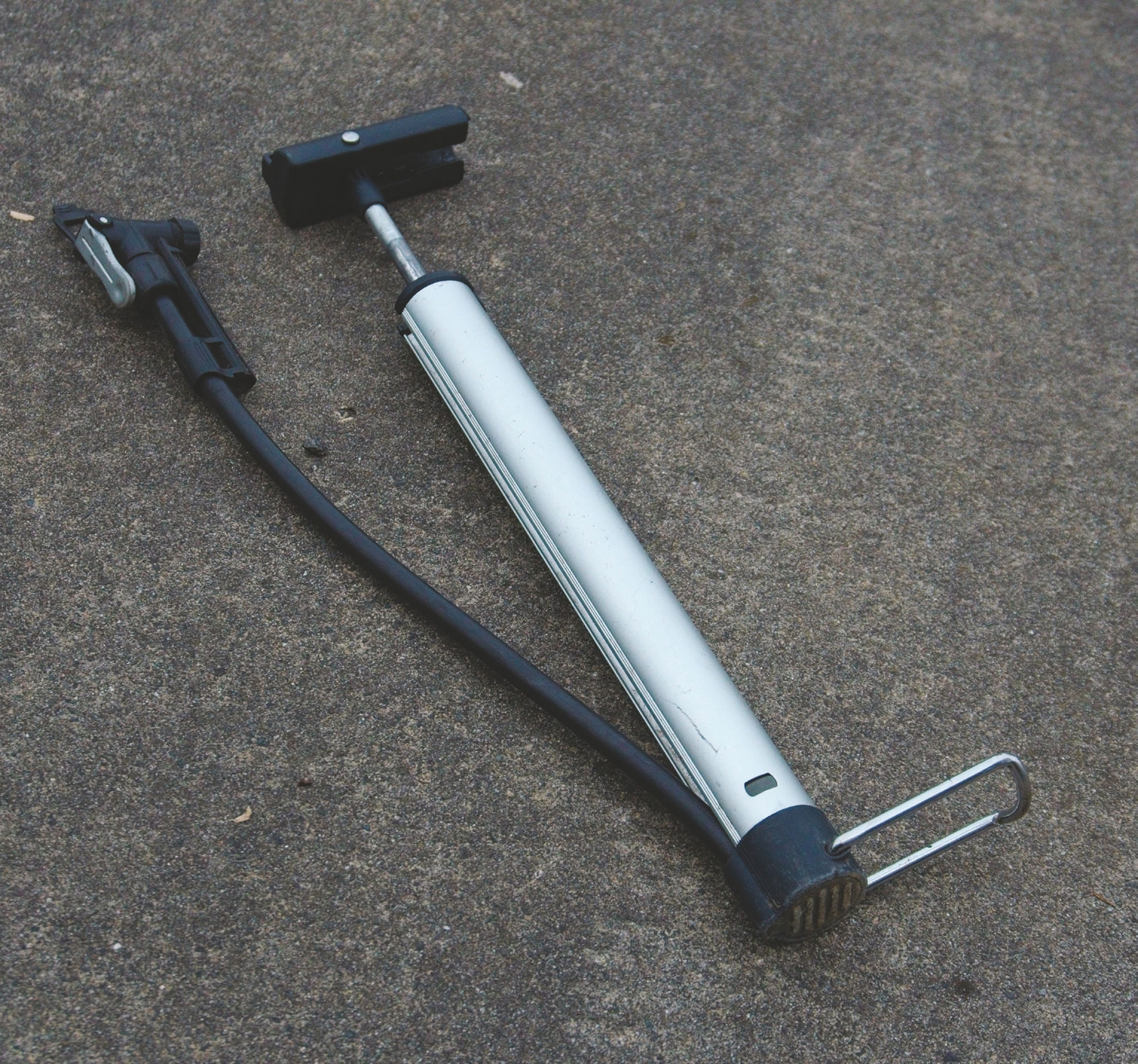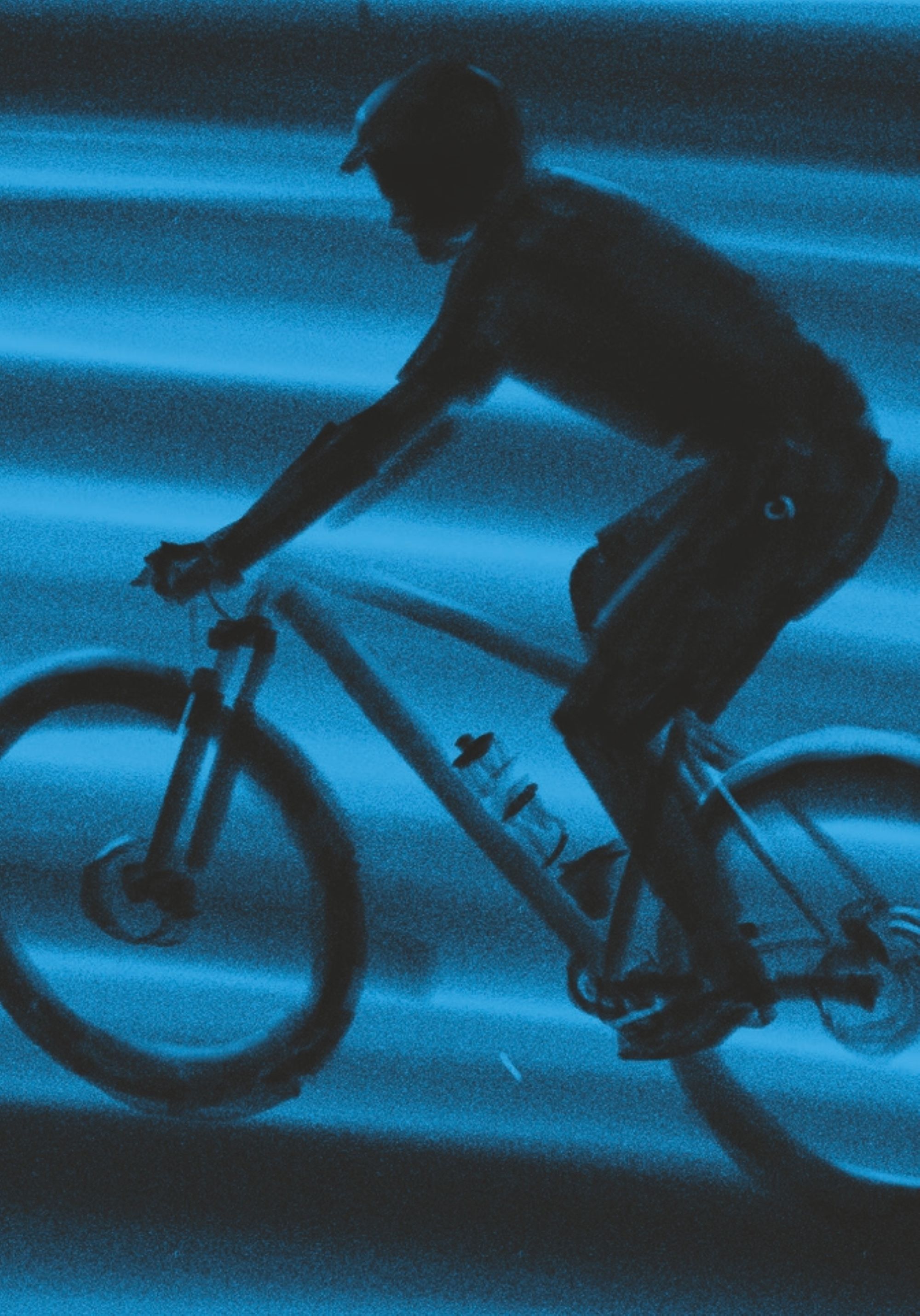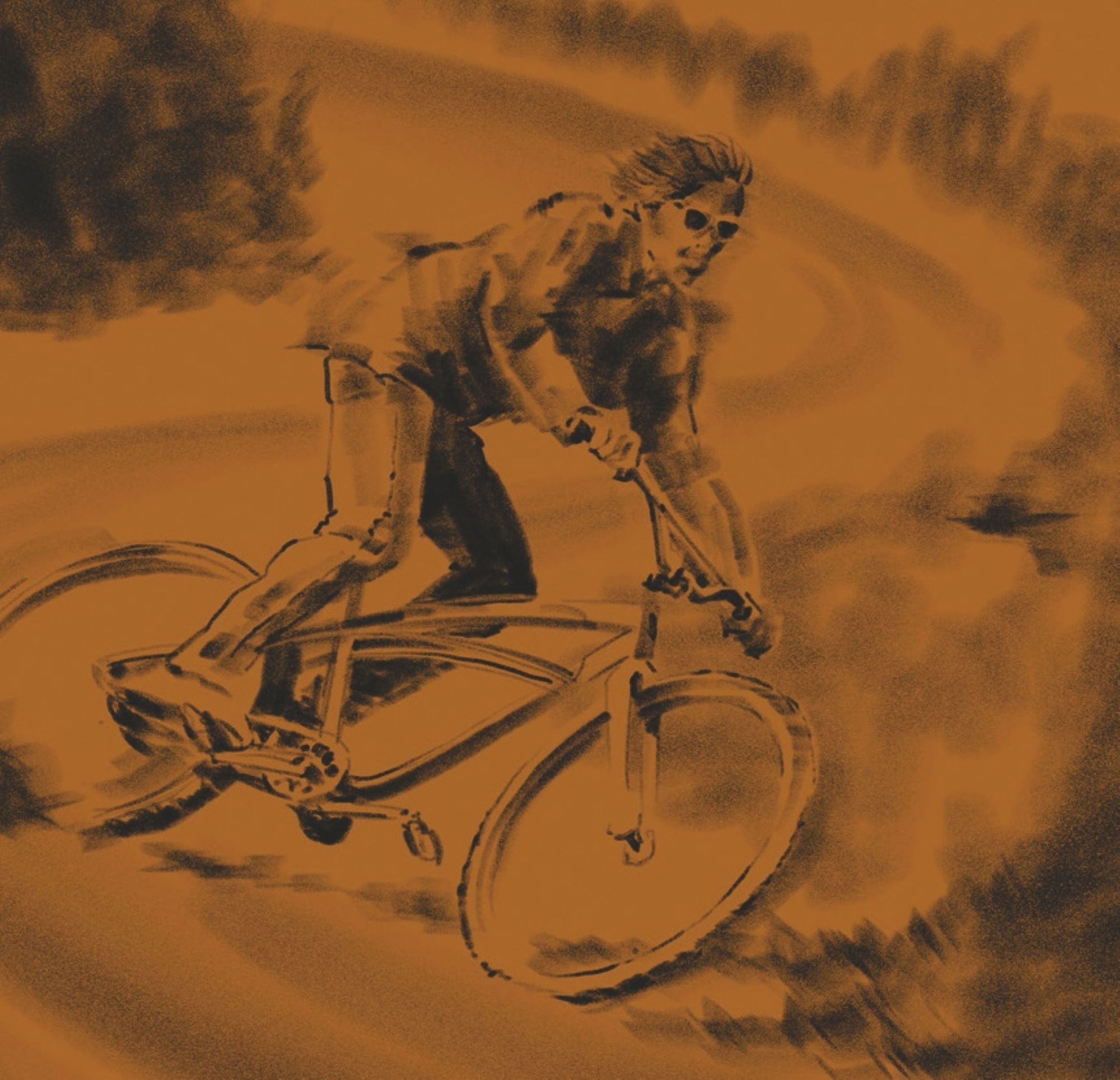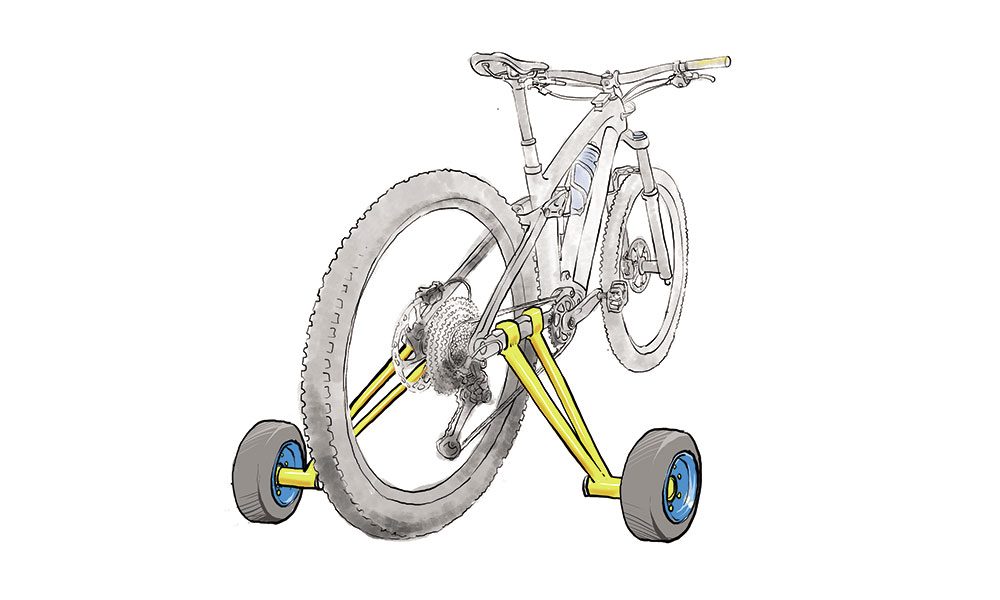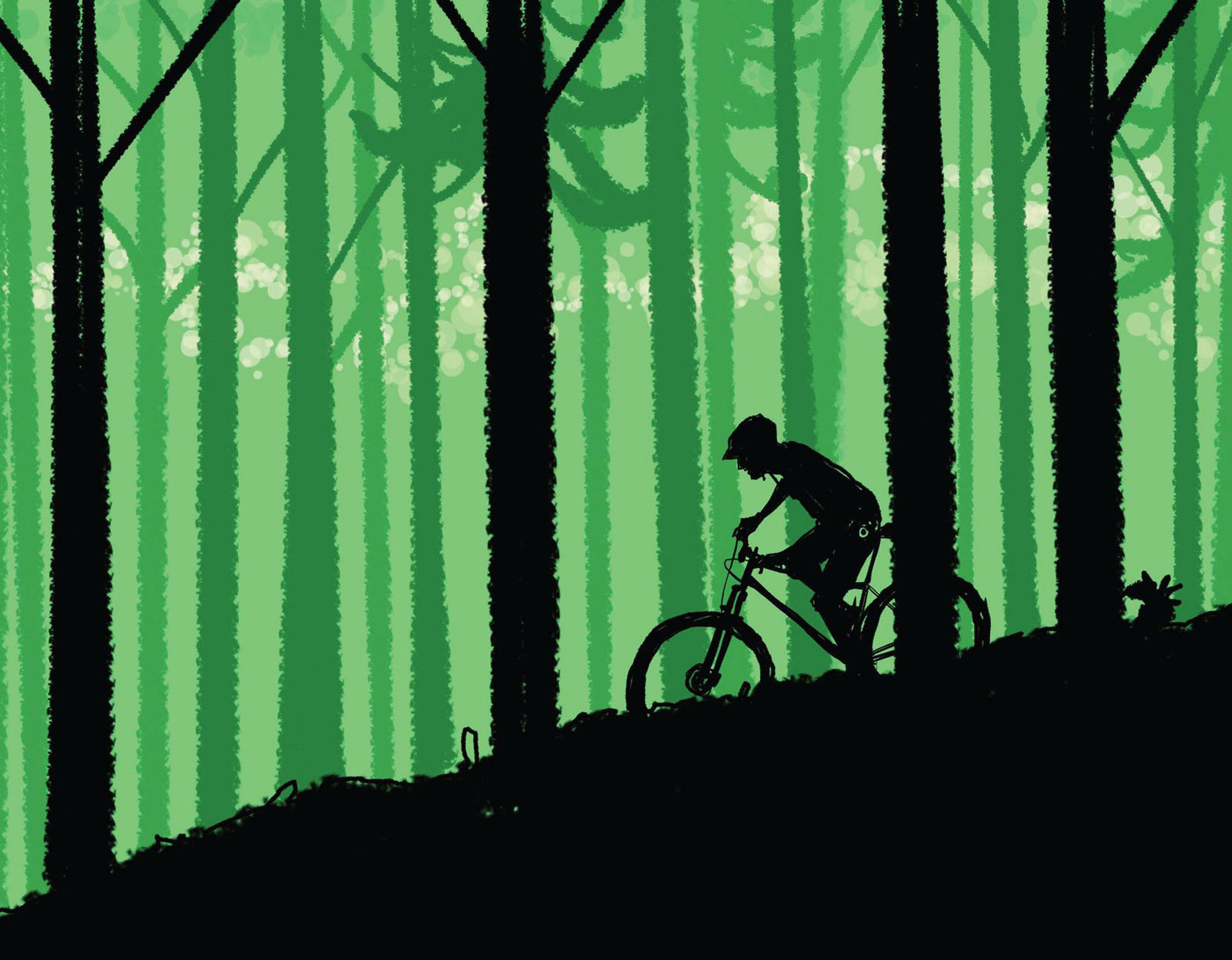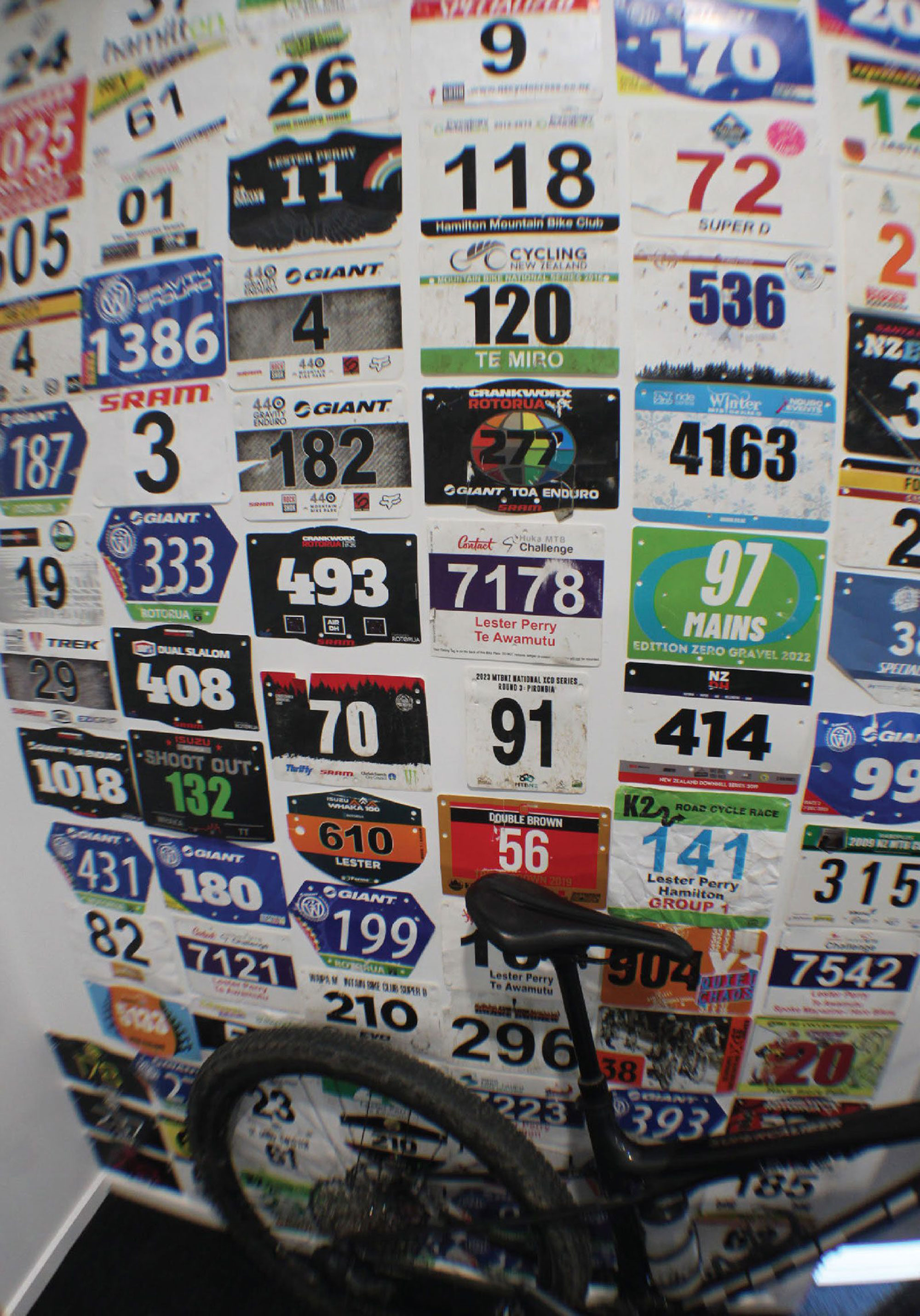Where is the grass greener?
Words Liam Friary
Image Cameron Mackenzie
Recently, I had the privilege of being able to travel overseas again, far from home. It was bloody splendid! Yet, at the same time, it made me grow even fonder of our antipodean home. The thing that struck me most was the ultra-strong community within biking – regardless of where you are in the world. I was picked up, driven around, put up, fed, shown through incredible trail networks, and often had bikes thrown my way. All of this was made simple by people involved in the bike industry who weren’t just doing their job, but were all-round good folk, too. These people make this trade even more special; their passion carries through all aspects of life and is what binds us together, thanks to one common denominator: bike riding. I am incredibly thankful to those who have made time, beds, van space and garages available – it was great to share rides together.
The thing is, in these current tough times, everyone says the grass is greener. And wherever it is that they want to be, that’s the grass that is greenest. Depending on your own reality, there might be some truth to the old adage but, after a few months on the road, trippin’ around North America, I can tell you Aotearoa isn’t a bad place to be. Don’t get me wrong – my time away was fantastic. But it just showed me that we have so much packed into our little country and, with a smaller population, there seems to be a tighter bond. Of course, I am the first one to peek over the fence to look for greener grass, but I always end up reflecting on the pure beauty of our motu.
I am reminded to stay grounded in these times and think about what I have, not what I don’t have. For me, bike riding is one thing I’ll always have – it’s a major part of my lifestyle and gives me so much more than just employment. As always, I’m thankful for the places it has taken me and the people I meet along the way – both overseas and right here in our own backyard.
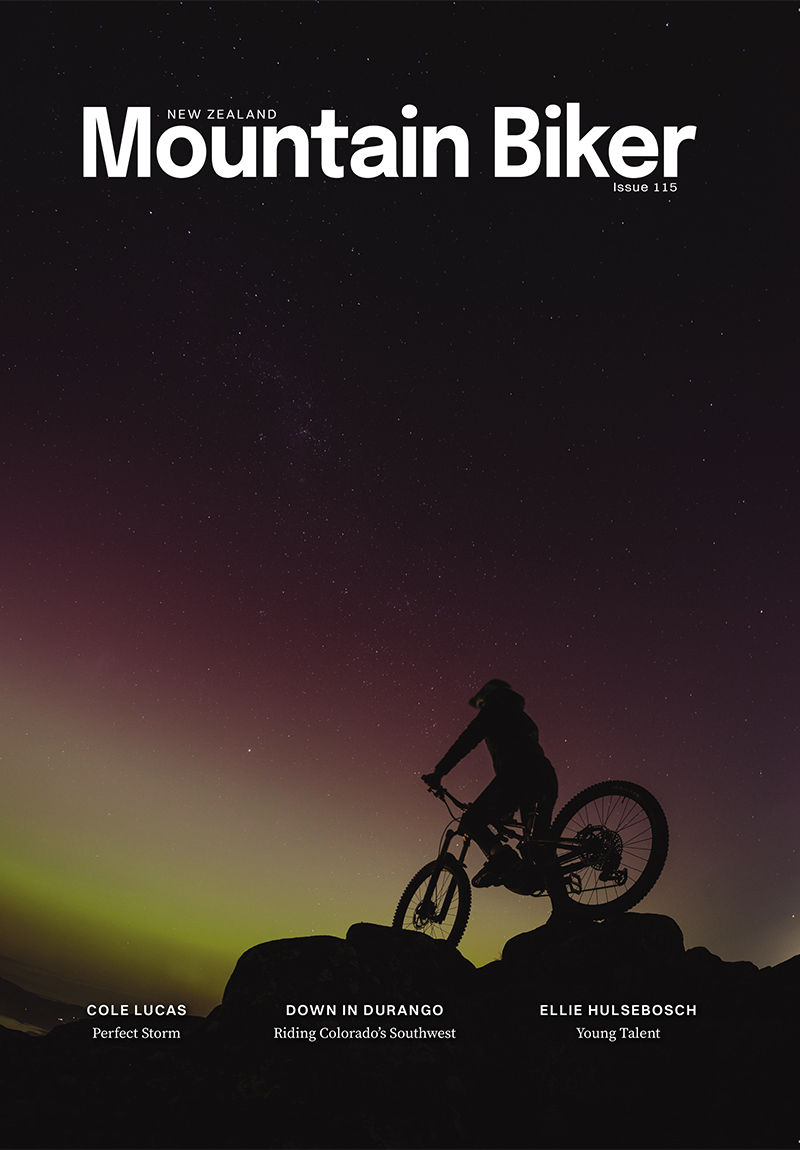
Opinion: Dirt Tracker
Words & llustration Gary Sullivan
This morning, like every morning, I made a pretty decent cup of coffee with my little machine, then settled in to read the news while the caffeine kicked in sufficiently to allow me to complete a few puzzles.
The ‘news’ I read is not exactly mainstream, like most bike riders I suspect my browsing is fairly specialised.
One of my daily internet haunts featured a bike made by a UK company called Stooge, and the model was a Dirt Tracker.
After decades of looking at bike magazines and then bike websites, it can feel like most things have been said before, so it takes something unusual to make me click and dig in. A headline with the words Stooge and Dirt Tracker will do it, especially combined with an arresting image. In this case, a unique looking bike running single speed and packed for a tour.
Burrowing into the article was interesting. OK, the bike was interesting: a rigid-forked hardtail with big-ass tyres and swept-back moto looking handlebars, and a retro colour scheme. A neat combination of old-school detail like a biplane fork crown and a neat bend in the top tube was dovetailed with a modern build kit of drivetrain and brakes. A cool thing all around, if you like that kind of stuff, which I do.
More interesting was the story alongside, about the history of that moniker “Dirt Tracker” as it applies to the United Kingdom.
Everybody knows mountain bikes were spawned in pockets of the USA where pioneers hot- rodded old balloon-tyred bikes into what they called ‘klunkers’, right? OK. But much earlier, in fact not long after World War 2, gangs of British teenagers were hooning around on stripped- down one-speeds with cow-horn handlebars. They called these ‘trackers’ or ‘dirt trackers’.
They modelled their activities on motorcycle speedway, and the sport of bicycle speedway became a thing. It eventually caused quite specialised bikes to be designed for it but, in the early days, a basic bike with a coaster brake and home-made speedway- ish bars, was the machine of choice.
After decades of looking at bike magazines and then bike websites, it can feel like most things have been said before, so it takes something unusual to make me click and dig in.
In the article, there were some photos of these bikes, and even an ad for a model by Phillips that was ready for action straight out of the box.
What really got my attention was how similar these bikes were to what most New Zealand kids got around on when I was at school.
The bog standard bike you got – when you were lucky enough – had a steel frame, 26” wheels and a coaster brake. They had mudguards, a reflector on the rear, and goofy little handlebars with plastic grips on the end.
Flash ones had three gears, and complete tossers had bells and even lights run off a dynamo.
Turning your bike from this saccharine offering into something you could love was pretty easy: remove the mudguards and the chainguard, turn the handlebars skywards, or even upside down, until you could scratch up the $2.50 required to buy a set of cow-horns. Right around the time I was doing this stuff, more elaborate handlebars came along, and my personal choice was a set called Grasshoppers, which were mini ape- hangers. You could get tall ape-hangers too, and even sparkly banana seats, but they rendered the bikes less useful for what we did with them.
We were obsessed with speedway too, and sessioned the backyard oval. My version had a slightly downhill entrance into a very satisfying bend around the lemon tree, and a less enjoyable – but necessary – gentle uphill around the veggie garden, along the feijoa tree straight, and back into that downhill stretch. I must have cut hundreds of laps because, by the end of summer, there was a neat groove around that fast turn.
Down the road was our school, with several tarmac courses available around the deserted buildings after everybody had gone home. A bit further away, a couple of parks had places we favoured. But what really got us excited was field trips away from the three or four blocks of home turf where the gang lived.
Hauling the bikes up Mt Eden was the best.
We would ride and walk (maybe the reason they are called push-bikes) to the top of the hill, where there were a variety of routes back to the bottom via the extensive earthworks created by the first people to inhabit Maungawhau. The pits they made to store kumara could not have been better for getting airborne. Not really the ideal way to treat what are valuable archaeological sites of cultural significance – but we were twelve.
Is it any wonder that when mountain bikes happened I bought the first one I saw for sale?
Or that going out for a skid is still my favourite thing to do on a bike?
The image I scratched up for this edition is not my after-school bike, or the Stooge I started the column with. It is the current version of my Surly Krampus which shares concepts present in both of those others. OK, it’s running gears, but in most other respects it ticks the boxes: simple, rugged, and fun.
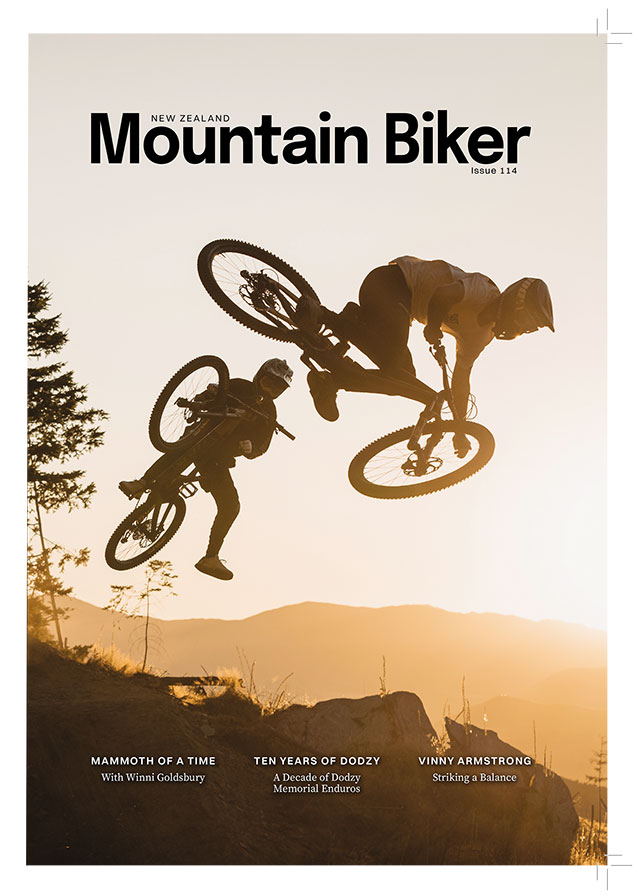
Opinion: An Oldie but a Goodie
Words & Image Lester Perry
We’ve all got our favourites; there are some items of kit that just keep on working and seem to never die. They become a staple in ‘ride life’. They may not be the fanciest, most stunning-looking, have a ‘name’ brand, or even cost much money, but they just do what they are designed to do to a decent level.
Inanimate objects strangely become a vital piece of our experience. For some, it’s a bike, a favourite kit, or even the music listened to while riding. In my case it’s a pump. Yes, a pump.
I don’t even remember when I got this little beauty, but it must have been early 2013 or before, as it came with me on the 2013 Trans Provence (multi-day enduro, now called the Stone King Rally). I know I won this pump as a spot prize at an event at some point; it’s so long ago I don’t even remember what sort of race it was, what bike I was riding, or even where it was. Strangely though, I do remember feeling disappointed when I won the pump. I can only assume it was a bit of a booby-prize amongst a sea of higher-value, more sought-after items.
It’s a reasonably unassuming piece of kit, but I’ve mounted tubeless tyres with it, and it does double duty to pump up my ride-on lawnmower’s slow leaking tyre. If there’s air to pump it’s up to the task and it’s always there when I need it, no issues or niggly problems. From time to time it seems to disappear and hide out of sight causing me some stress thinking I may have left it behind in a trail head carpark somewhere.
I’ve had scathing comments from friends who were underwhelmed when I presented them with it after being asked, “Bro, you got a track pump?”.
Little did they know how solid this little pump is, and oftentimes jeers turned to positive comments.
The pressure gauge gave out at some stage and I’m sure it wasn’t even remotely accurate before it finally conked out but, thankfully, the pump didn’t skip a beat, and I still check my tyre pressure with a gauge, so no real loss there.
Although the logo has been rubbed off, I remember it being some brand that didn’t hold any weight, just a generic pump with a logo screen-printed on the side of it. I can’t imagine its retail value was much north of $50 so, even if I had paid for it, I’d be super pumped with the value I’ve had from it; it’s cost per use would be totally laughable!
I’ve had scathing comments from friends who were underwhelmed when I presented them with it after being asked, “Bro, you got a track pump?”. Little did they know how solid this little pump is, and oftentimes jeers turned to positive comments.
Recently, the pump got really hot when used for more than 30 seconds or so, and the action became quite sticky. So much so that I figured it was heading for the big yellow plastic bag, never to be seen again after our next ‘Rubbish Day Wednesday’. It was at this point that regret set in. This pump has been with me on this journey of life for so long, to just scrap it without a second thought seemed wrong, almost immoral – why couldn’t I give it another shot? I dug out some suitable grease and a screw driver and, for the first time ever, disassembled the pump, carefully cleaning and lubing all the seals and moving parts. So dirty were the internals, I’m surprised it worked at all!
I’m kicking myself for waiting so long to service the pump. Post-service, it still works but it’s not quite as smooth as it was before its hiccup.
Once the damage is done, there’s no coming back from it – niggles of the damage will remain.
I’m sure there’s a lesson in all of this, maybe it’s a case of not upgrading or trading up just for the sake of it, or perhaps it’s to stay on top of servicing rather than waiting for an issue to finally service something. Chances are once the damage is done, it’s done. Lucky for me, my favourite pump keeps on working, and if I keep up to speed with a more regular clean and lube routine, who knows how long this thing could go for!

Opinion: Square peg, round hole
Words Lester Perry
Illustration Gary Sullivan
Consider this: you’re a new rider rolling up to a trailhead, you’ve borrowed a bike from a mate who didn’t need it today, and it’s your first time riding by yourself. Unloading the bike, you’re excited; it’s a size too big but you wouldn’t know otherwise. Your mate who you’d normally ride with isn’t with you today, so you’re more focused on what’s happening around you. Dressed in the clothes you wear daily, you mount your steed. Heading toward the trail from the car, you’re looking at what other people are riding, what they’re wearing, and the lingo they’re using. You see things you don’t usually notice when you’re riding with your mate. “Cripes, those bikes are worth more than my mate’s bike, his car – and mine – combined!” “Those guys in all that fancy riding kit look pretty serious, must be what you need to wear for this riding stuff…”\
If you’re reading this, you’re probably not the person above. It’s likely, like me, you’re one of those other people our person rolled past on their way to the trailhead. It gets me thinking – are we losing people from our sport because they feel out of place or because it’s not an accessible or inclusive sport? I sure think so.
The person mentioned above is probably going to feel out of place – in fact, maybe they’ll have the same feeling I get after walking into a high-fashion store. “There’s nothing here for me; I don’t identify with anything or see anyone like me.” Maybe we’ll see these people at the trails a few times, but maybe they’ll switch off, and riding will become a “now and then” hobby as opposed to an exciting and enriching part of their lives – like it is for us.
Mountain biking has become an upper-middle- class sport at best. In particular regions, I’d almost go as far as to say that, from the outside, it looks like an elitist sport. That’s a huge generalisation and there are people working hard to break this mould but, for now, that’s how I think it looks from the outside.
We need a shift in thinking. Too often these days, trailside chat is about the latest wizz-bang gadget, recent component or gear purchase – or the cost of said part -, rather than about what a good time we’re having out on the trails. It’s worth pondering; are the upgrades and purchases we make really necessary upgrades, or just vanity purchases?
There’s an undercurrent that the bike we’re on must be as close to the top of the range as possible - and heaven forbid we ride it in its stock form straight from the shop floor!
Unfortunately, it seems mountain biking has become a fashion sport, with purchasing decisions nowadays driven by fashion and the need to have the latest thing, rather than an actual necessity. There’s an undercurrent that the bike we’re on must be as close to the top of the range as possible – and heaven forbid we ride it in its stock form straight from the shop floor! Honestly, how many people are out-riding a mid-level fork and need the top model? Those OEM tyres?They’re probably not that bad, so why not wear them out before you change them? You might even be surprised at how good they really are, regardless of what you’re told.
Sure, if something’s worn out or broken, it needs replacing – but I reckon we need to normalise buying secondhand, or at least considering it, for no other reason than minimising our impact on the planet and, in a small way, we may avoid excluding people. If a bike has been properly looked after, it should last years – and to be fair, the minuscule upgrades we see from season to season are almost unnoticeable. They’re 1% changes barely worth dropping bank on. Will you really feel the difference or is it just that shiny decal you want to show your mates on Instagram?
When it comes to buying a brand-new bike, the same logic applies. I’ve seen riders (myself included in the past) ticking up high-end rigs on high-interest schemes, all to keep up with the Joneses, leaving them financially overreaching and ultimately over-capitalising on their bike. Let’s normalise buying a cheaper bike – it doesn’t necessarily need to be of lesser quality, but perhaps not a premium top-level rig. I’ve been surprised by the performance of some mid- level groupsets and suspension. Are those shiny decals and a 300-gram saving in weight really worth a few extra grand? Doubt it. I’d encourage buying a value-conscious bike that’s more realistically suited to the level it will be used. Don’t skimp out too much, but deal with that extra weight and spend the money saved on a skills clinic and a riding trip. Both of these will boost your riding level and give longer-lasting enjoyment than that 300-gram saving ever will.
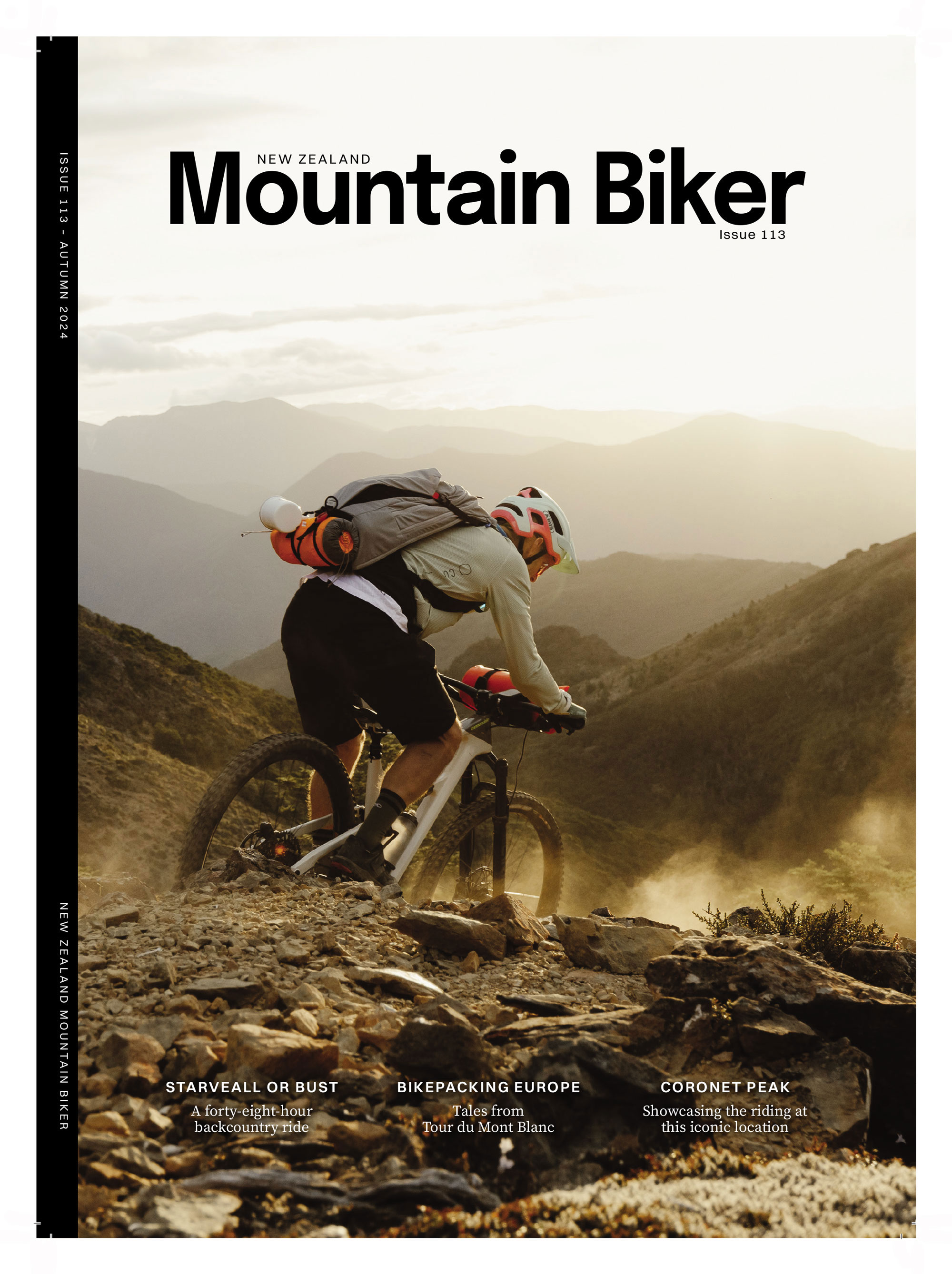
Opinion: Bikes are good, period
Words & Illustration Gary Sullivan
This column was going to be about a bike ride and yet another weird character trait I discovered while doing it.
Then, I read Lester’s excellent opinion piece, which can be found elsewhere in this issue. I get to preview things like that if I am asked to provide an illustration to go with it, and I absorbed it in full agreement. I like to say my favourite bike is the one I am riding when I should be working, so just about anything with two wheels will qualify on any given day. Doesn’t need to be top of the line, up-to-date, or even manufactured this century. Bikes are good, period.
That thinking got me started on the state of things in the ‘industry’ right now.
One of the retail behemoths that trade in the New Zealand bike segment has recently changed hands for a dollar. A well-known brand, a bunch of stores, a heap of staff, and probably a significant pile of debt – all this for a dollar, presumably ex-GST.
People have often remarked, in recent years, that this outfit and the other more specialised retail behemoth were in a race to the bottom, and I guess this means there is now a winner.
Financial commentators place some of the blame for the failure of this outfit to make a profit on the post-COVID struggles of the bike market. Not sure about that, but the bike market is definitely in a weird state.
Suppliers super-flush with inventory are struggling to sell stuff. There are solid reasons for that situation.
Talk to just about anybody in the bike caper – they will tell you times are tough. The troubles started with COVID, and not with a downturn. It was a boom. Most activities that were fun were off the table, but riding a bike was still allowed. Travel was a no-go, and interest rates were still almost non-existent, so a lot of people threw their excess dough and energy into bikes.
I like to say my favourite bike is the one I am riding when I should be working, so just about anything with two wheels will qualify on any given day. Doesn’t need to be top of the line, up-to-date, or even manufactured this century.
This happened globally… in the developed world anyway. Nearly every supplier ran out of more or less everything. Lead times for the products people wanted were years long in some cases, and retailers and their customers were very cranky with distributors, who were similarly cranky with their suppliers.
As the retail market clamoured for more, manufacturers cranked up their ability to deliver stuff.
It is perhaps surprising that the general expectation seemed to be that the golden weather would go on forever.
By the time that increased productivity reached the shop floor, most people who were going to had already bought their bike stuff, COVID was now a boring sidebar to life, and the heat was disappearing from the market.
Then a bunch of discretionary cash was hoovered out of the picture by increasing costs of living, and interest rates.
Around the world, big companies have gone bust, teams have folded, sponsorships are drying up. Top riders in some branches of the sport have found themselves out of a gig.
I think the current problem in the bike game is similar to the challenges of capitalism in general: endless growth is impossible to maintain, and it was never going to continue like it did for that brief period during COVID.
There is a lot of product available, new stuff will continue to arrive, and right now things are tight.
But hey! A good bike shop is a wonderful thing. A real bike shop will be kept afloat year-round by the constant need that riders have for parts and service. Of course, it will sell bikes, as many as possible. A good shop will try to ensure that the bike sold matches the customer’s needs.
Meanwhile, out in the woods, things have never been better. There is nothing wrong with the actual sport of riding a bike. Doesn’t matter if the rider is on the latest thing or on a sled from last century - hooning down a trail is as good as it ever was, and many people are out there doing it.
More valuable to their customers will be the advice and insights they pass on. By the time a punter has been absorbed into the sport to the point where escaping is unlikely, they will have figured out which bike shop suits them and will be in there on a regular basis, dropping cash on keeping a bike (or fleet) functional.
Meanwhile, out in the woods, things have never been better. There is nothing wrong with the actual sport of riding a bike. Doesn’t matter if the rider is on the latest thing or on a sled from last century – hooning down a trail is as good as it ever was, and many people are out there doing it. Gravel is growing, bikepacking is growing, eBikes are everywhere.
Which brings me back to my initial sentence – the bike ride.
I got a stellar Saturday a few weeks ago and, for reasons I now forget, I had nothing else that urgently needed doing except bike riding.
As usual when riding familiar territory, I started creating a route in my head on the way to the trails. By the time I got to my start point I had one sketched out.
It was ambitious.
Up As You Do, down Ten of Clubs, on to Corridor, then Turkish, Rock Drop and Rosebank, coffee and muffin, up Soakhole, down K2, up Direct, down Tutaeata, up Apumoana, down Johnsons, up Lobotomy to the top, down Tihi-O-Tawa, back to the top, through Tuhoto Ariki, up Moerangi, down Te Ahi Manawa, up Lookout, down No Brains, along Taura, up Tokorangi, down Fluffies.
Incomprehensible if you have never visited Rotorua but, trust me, it is a big and lavish helping of trails.
I expected it to take a while.
It did. It was great, I met people here and there (see above re. the state of the sport), only got passed twice (two young fellas at the same time, so only counts as once). I fell off twice.
Here is the weird character trait: by the last climb I was out of gas. I had to sit down on the side of the trail and gaze into space for a while. Some complete beginners even asked me if I was alright. I was, I was just rooted.
But I had to finish my route. Once created, it needed completion. Why, I can’t explain. It just did.

Embracing data: A smarter way to ride
Words Alex Stevens
Images Supplied
If data is the key to our modern lifestyles, it pays to get smart about how we use it. Thanks to the super computers we carry around in our pockets, tracking how we sleep, eat and exercise is now part of everyday life. It’s all about harnessing the power of the data and, as I’ve found out, if you add an eBike to the mix, you get double the fun on the power front.
As someone who has been lucky enough to own a bike at pretty much every stage of my life ever since the BMX of a long-since-passed childhood, I was keen to get a look in once the eBike revolution began taking hold. After all, if you’re someone who owned a BMX back in the day it’s a sure sign you’re no spring chicken and let’s just say my oldish legs have been through a few rotations. A bit of assistance on the uphills sounded like a great idea as long as nothing was lost in the downhill experience. So, I’ve had my eBike for a while now and can confirm: less leg burn plus more laps equals even more fun.
I opted for a Bosch-powered Trek Rail knowing there would be no issues when it came to performance and reliability of the motor or the battery – what I considered the key elements of an eBike. There was also talk of the eBike Flow app as part of Bosch’s Smart System, but I didn’t get around to downloading that straight away when I first got my bike. I figured it was something like Strava or another fitness style tracker which I already use and there was no point having yet another app. I was just keen to get out and ride.
I finally checked it out after a mate told me about some of the app’s features and I started to realise maybe I was missing a trick. Turns out there’s more to it than a way to track your ride and fitness data, although this is one of its key uses. It’s also designed to sync with tools like Strava, Komoot and Apple Health rather than replace them. So, what is the eBike Flow app? It’s actually the brains of the operation if your Bosch eBike is equipped with the Smart System. An easy way to tell is from the display unit. If your eBike is equipped with the Mini Remote with System Controller, Intuvia 100, Purion 200, LED Remote, Kiox 300, Kiox 500 or Smartphone Grip you have an eBike with the Smart System and you can connect it with the Flow app.
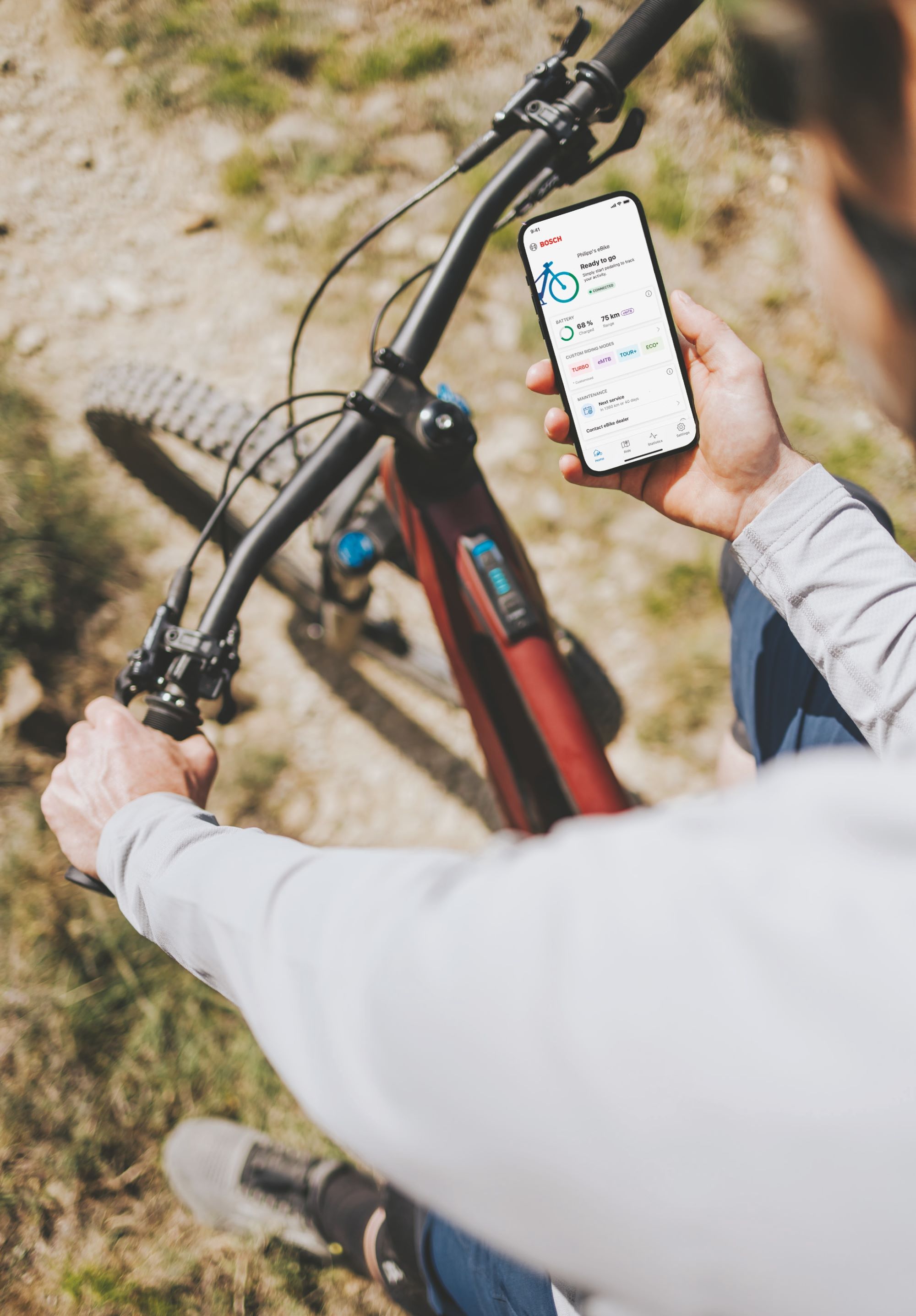
It’s all about making the tech work for you which, having started using the eBike Flow app, I’ve realised I’m all about. After all, if you’ve decided to embrace e-powered riding you might as well enjoy all the benefits.
The eBike componentry, including the drive unit, battery and display screen are fully connected and the app is the control centre. So, rather than jumping on your eBike and letting it do all the work, or having to adapt to a one-size-fits-all set up, through the Flow app you have the option to customise the eBike so it suits your riding style and needs.
In Eco or Turbo modes you can tune support, dynamics, maximum torque and maximum speed. If, for example, you still want to do a bit of work on the hills or you’re light and just don’t need too much assistance, you can reduce the maximum support level and save some battery while you’re there.
It’s all about making the tech work for you which, having started using the eBike Flow app, I’ve realised I’m all about. After all, if you’ve decided to embrace e-powered riding you might as well enjoy all the benefits. So, the app connects you with your eBike and your eBike with the digital world.
It’s all about making the tech work for you which, having started using the eBike Flow app, I’ve realised I’m all about. After all, if you’ve decided to embrace e-powered riding you might as well enjoy all the benefits. So, the app connects you with your eBike and your eBike with the digital world.
One thing I’ve really been enjoying is not having to worry so much about battery range. While your display screen is good for letting you know how much battery you’ve got left, the Flow app takes this a step further. Thanks to the on-board mapping technology, it’ll tell you how much battery it takes to do your favourite trails, based on your individual data. You can see how changing between modes affects your battery usage so you’ll know if you’ve got enough juice to hit Turbo on the last hill or you’re going to have to pedal home a bit harder in Eco. It’ll even calculate your arrival time.
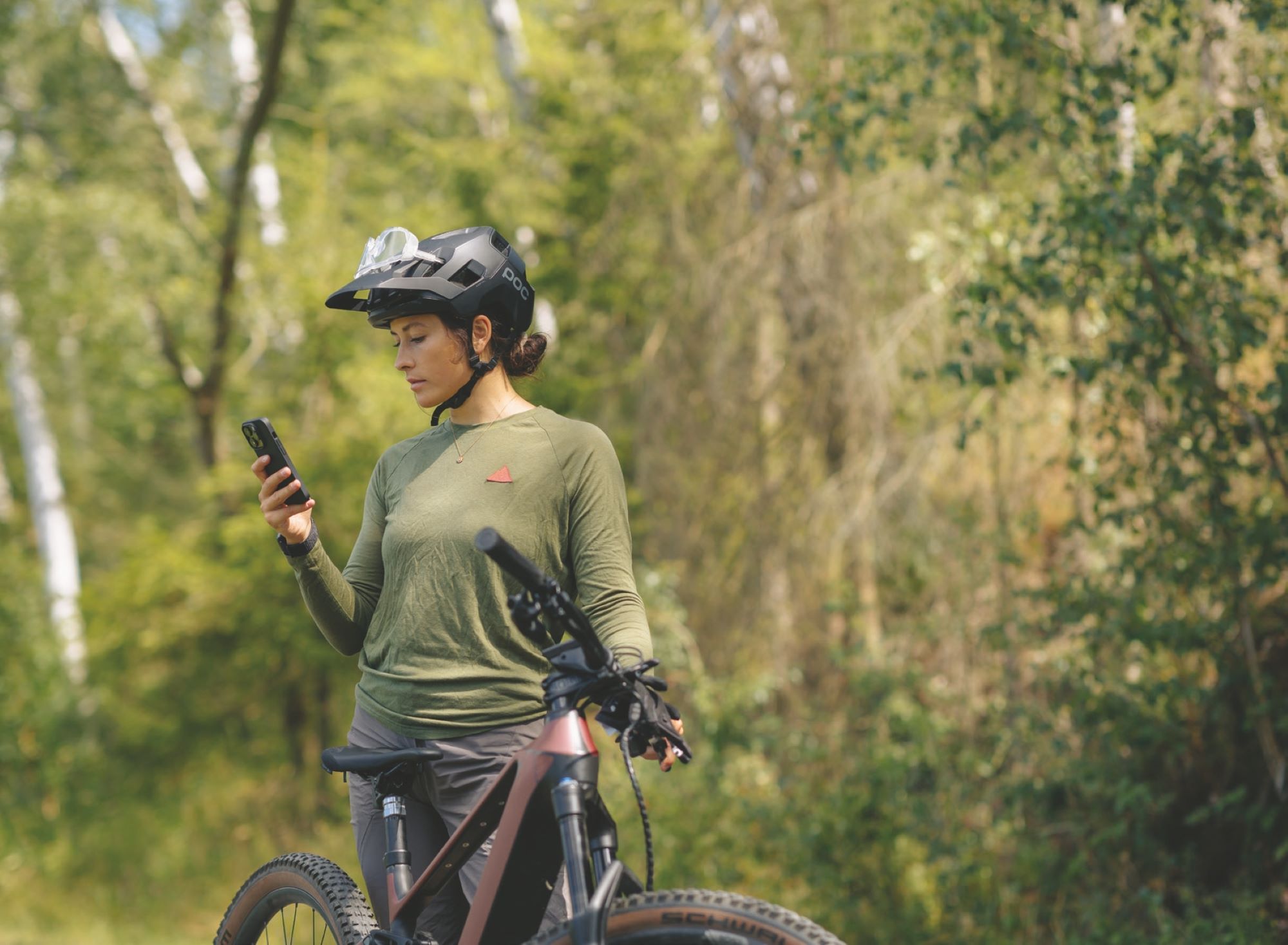
Battery status, remaining range and distance travelled are all displayed right there on the home screen along with other handy info like when your next service is due – because who remembers to put that in the diary. If you’re like me, you don’t even manage that for the car, let alone your eBike.
The navigation and route planning features also make life easier, especially if you’re scoping out new trails. You plan the route in the app and then use your smartphone as a navigation display simply by installing the Smartphone Grip (which is sold separately). Rather than just following a line on a map you can see details like junctions and descents so it’s harder to get lost. I still managed it but thankfully there’s a re-routing function, much like you’d find in a car, so I was back on the right track almost instantaneously. I imagine this would be even more handy if you’re riding in a town or city and having to deal with traffic at the same time.
The good news is you can now receive these updates over-the-air, rather than having to take your eBike to a bike store. You just download the updates via the app and transfer to your eBike via Bluetooth.
So if, like me, you’d thought that the eBike Flow app was just another activity tracker I’d recommend taking a closer look. It’ll unlock the potential of your eBike and help you up your eMTB game. Crunch the numbers, crush the climbs.

Musings Issue 109
Words and illustration by Gaz Sullivan
“I got hooked up somehow, spat over the bars and into the thicket of manuka that was trailside…”
I worked out recently that 2023 is something of a milestone: I have been riding mountain bikes for 40 years. If practice makes perfect, I should be very good by now. That premise doesn’t necessarily prove to be correct, though. In approximately half a dozen outings so far this year, I have crashed during almost every one.
The first — the one that will require physio — was performed on a short, flat section of a very steep climb. Even with electrical assistance the climb rendered me briefly cross-eyed, and I misjudged a corner. Slight back sprain, but nothing serious. I did knock the control button doofer off its little mounting bracket, but I wrapped it neatly around the brake and dropper cabling and made for the nearest set of Allen keys, down at the car park.
The next bail was executed at a standstill, and involved more pain but less long-lasting consequences. Exiting a favourite trail requires crossing a steep little gully which contains another trail. The procedure is: slow down, check nobody is coming, drop down a bank to get enough momentum to clear the other side. I have done it many times but, for no valid reason, I stalled at the top of the far side. I couldn’t get my foot out of my pedal and toppled over an ancient piece of gnarled wood that is a feature of that section, thus jamming my leg between the wondrous-but-hefty e-bike I am supposed to be reviewing, and the gnarled old log, leaving most of my carcass occupying the trail I was trying to cross, almost upside down. The gigantic battery I like emptying was now making itself felt and, as my foot was still securely clipped-in under the thing, I was sort of stuck. I had to make my biggest effort in living memory to get free before a train of groms ran me over. Lower leg looks worse for wear. Dignity shattered. No other damage.
The best ride of the new year, so far, was out in a jungle I had never entered before, in the company of a gang of very good riders. Here is where the modest skillset I have accumulated after four decades of trying to ride mountain bikes, really jumped into focus. It was a tricky set of trails, most of which I loved. There were a few sections that were well outside my comfort zone. I don’t actually recall any particular crash, but I am sure there was at least one. To demonstrate that falling over from a standing start is my new reality, I made sure nobody missed the next episode. A group ride in Auckland on the roadie was a complete success except for my hard landing. We rode over 50 kilometres in brilliant sunshine, most of it on cycleways or gravel paths on the edge of the Manukau Harbour. Part of that section was a muddy but entertaining bit of singletrack that let us get around a fallen tree, and also filled my roadie shoes and pedals with dirt. We opted for an excellent lunchtime burger in Mangere Village, and I coasted to a halt on the sidewalk in full view of my colleagues and the assembled citizens, and toppled onto the tarmac, feet securely trapped in the pedals. To add to my humiliation I needed assistance to get detached. The consistency of the Ambury Park mud was the perfect roadie pedal glue.
We got back to base a few minutes before Auckland turned on a tropical-style deluge. Rain is never as nice as when it is dodged by a tight margin.
The next day was a bottler, with bright sunshine and high fluffy clouds, making the Rotorua caldera look like the introduction of The Simpsons. There haven’t been two days in a row like that since last year, so bike riding was on the menu again. That jungle I visited needed another look, so I went there again. It was a great excursion, at least as good as the first time. I didn’t crash in any of the difficult bits, but I was steaming along an innocuous stretch on the homeward leg when I made a spilt-second (delusional) decision to get myself out of a rut that had developed in the centre of the trail. I got hooked up somehow, spat over the bars and into the thicket of manuka that was trailside. It bent to accommodate most of me and some of the bike, and I was wedged securely into the landscape, the flexible young manuka trunks were spring loaded and popped in between legs, feet, cranks, frame and wheels, pinning me in position. The prickly foliage was a nice extra feature of that incident, magically distributing itself between my outfit and my skin.
I was tempted to give up and maybe have a nap. I wasn’t uncomfortable really and it seemed like an easier option than trying to extricate myself. But the remains of the trail beckoned, and nothing felt broken, so I wriggled out of the scrub and brushed off the evidence.
Today is Friday 13th. The sun is out, and I am going to push my luck.
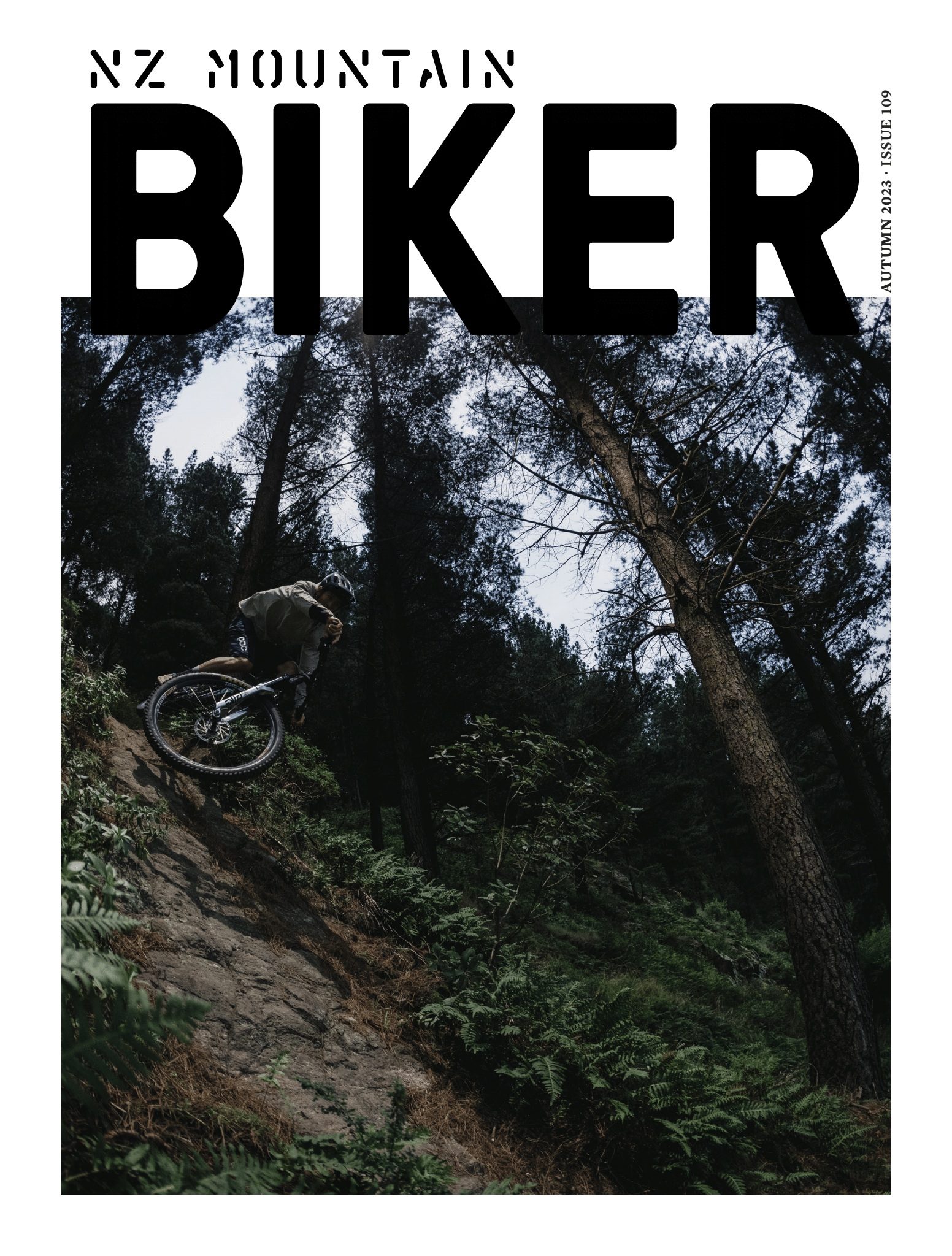
Braking news: The arrival of Bosch ABS
Words Alex Stevens
Images Cameron Mackenzie
Imagine this: you are riding down the road at 32km an hour on your eBike, en route to the trails and, suddenly, a car pulls out in front of you. It’s one of those moments when time slows down, and split-second reaction times are the difference between disaster or a close call. You grab a handful of front brakes to try to stop in time, only to end up going over the bars or sliding across the bonnet. Sounds nasty, right?
So, when your mate goes; “Pedal full gas down the road, grab all the front brake you can to try and send yourself over the bars….” you’d agree that sounds like a silly idea. Still, here we are, sprinting down the road full speed, pulling the front brakes on at full power and expecting to do a front flip. But, instead of finding myself laying in the middle of the road wondering why I agreed to such a stupid idea, I came to a stop safely, still fully clipped in and upright. The Bosch eBike ABS system has kicked in.
While we’re used to finding electronic braking control on cars and motorcycles, on an eBike it is a little more unique. This innovative technology has now started gaining traction in the eBike industry and we’re seeing some exciting progression as brands like Magura and Tektro team up with Bosch to equip their powerful 4-piston brakes with the ABS system, to ensure you’ll come to a stop safely.
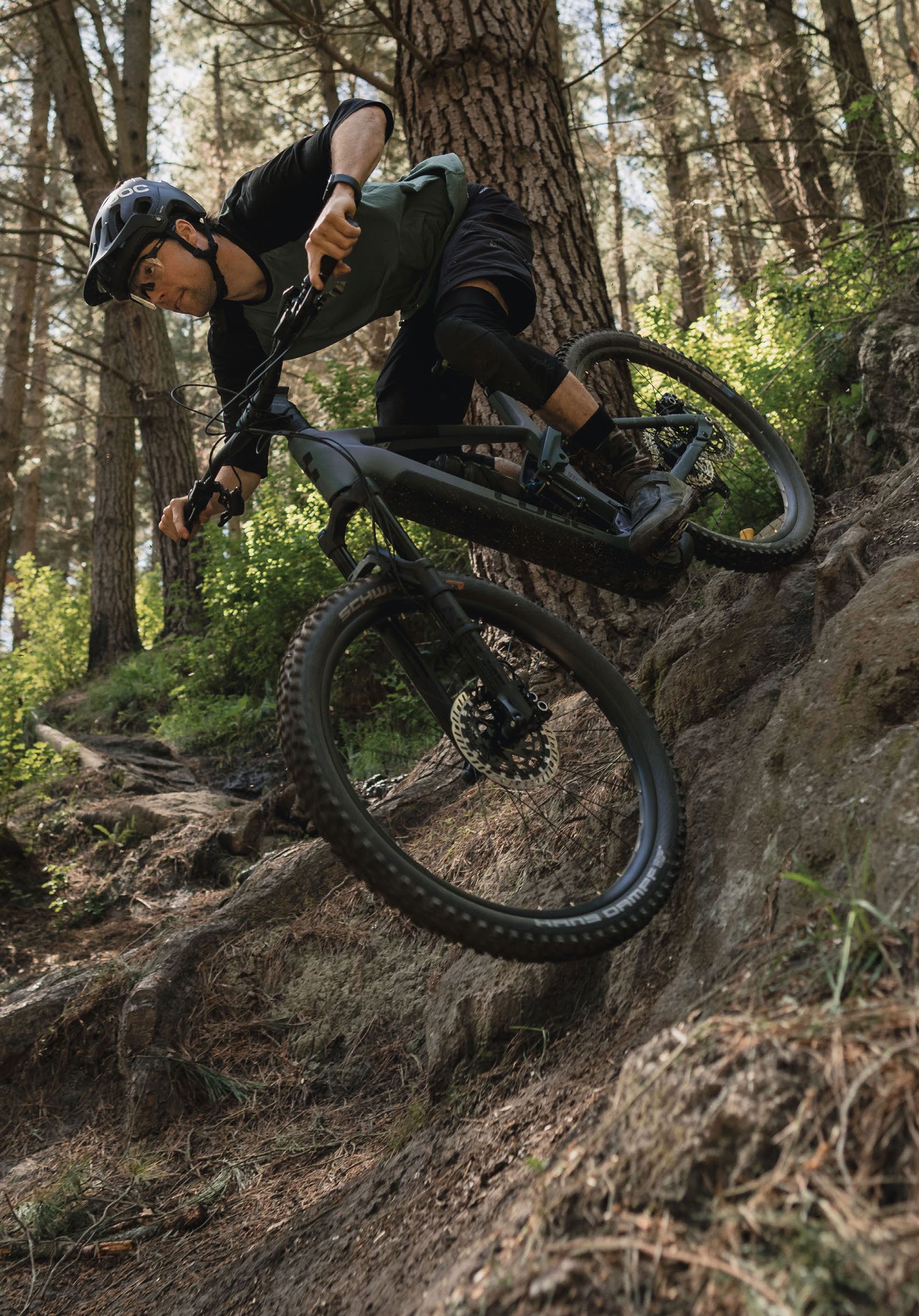
It blew my mind that the ABS system does everything possible to keep you tyre side down and to reduce the likelihood of going over the bars no matter how hard you try slamming on the front brake at 32km an hour.
Bosch’s ABS technology is finding its way onto the eMTB models of many brands, not solely featuring on road and commuter bikes. The arrival of ABS on mountain bikes is where I was most intrigued to see how it would stand up to a variety of trail conditions, and to find out how much of a difference this new style of braking provided. Could this be a whole new world? eBikes have already opened up so many possibilities within mountain biking and I wanted to see what this new innovation was all about.
I got the opportunity to test out the Cube Stereo Hybrid 140 ABS and I’d have to say it made for a fun ride with a lot of learning. Riding this bike across a wide range of trails in Christchurch, from the Port Hills out at Godley Head to the steep descents at the Christchurch Adventure Park, I gave the ABS system a thorough test, throwing every type of terrain I ride regularly at it. Even on the tight, twisty, steep turns of SMC and Pork & Pūhā, at the Christchurch Adventure Park, the braking was 100% in control all the time, and not once did I feel like I was going to go over the bars.
So how does this all work? What’s impressive about this technology? Speaking to the bike nerds and naysayers, it’s all about brake modulation – the ability to precisely and accurately control the amount of clamping force on a disc with a given amount of pedal input. That is not easy to pull off with a 25kg eBike. These things just love to pick up speed and slowing them down whilst keeping in control can be tricky.
The Bosch anti-lock brake system works a treat. It prevents the front wheel from locking and the back wheel from lifting, essentially allowing the rider to avoid skidding when grabbing too much – or not enough – brake. It is an odd feeling at first, having this additional reassurance to get used to and, because of this, the way you normally brake on a mountain bike is adapted ever-so-subtly. The system is run by a sensor on the inside of the lower fork, which is powered by the battery. Magura has 203mm rotors with sensors that measure the rotational speed of both wheels to ensure you can use both brakes simultaneously and confidently.
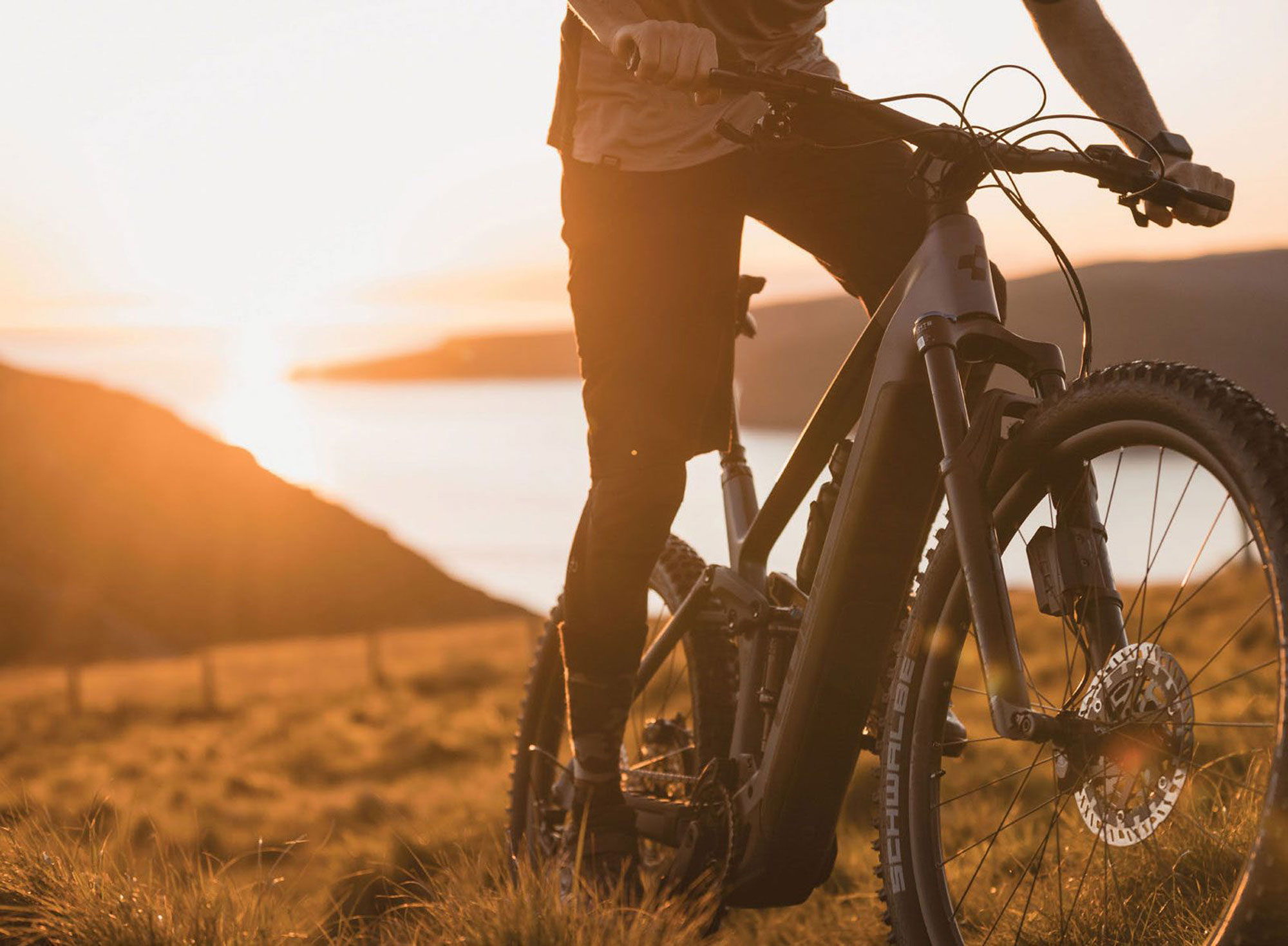
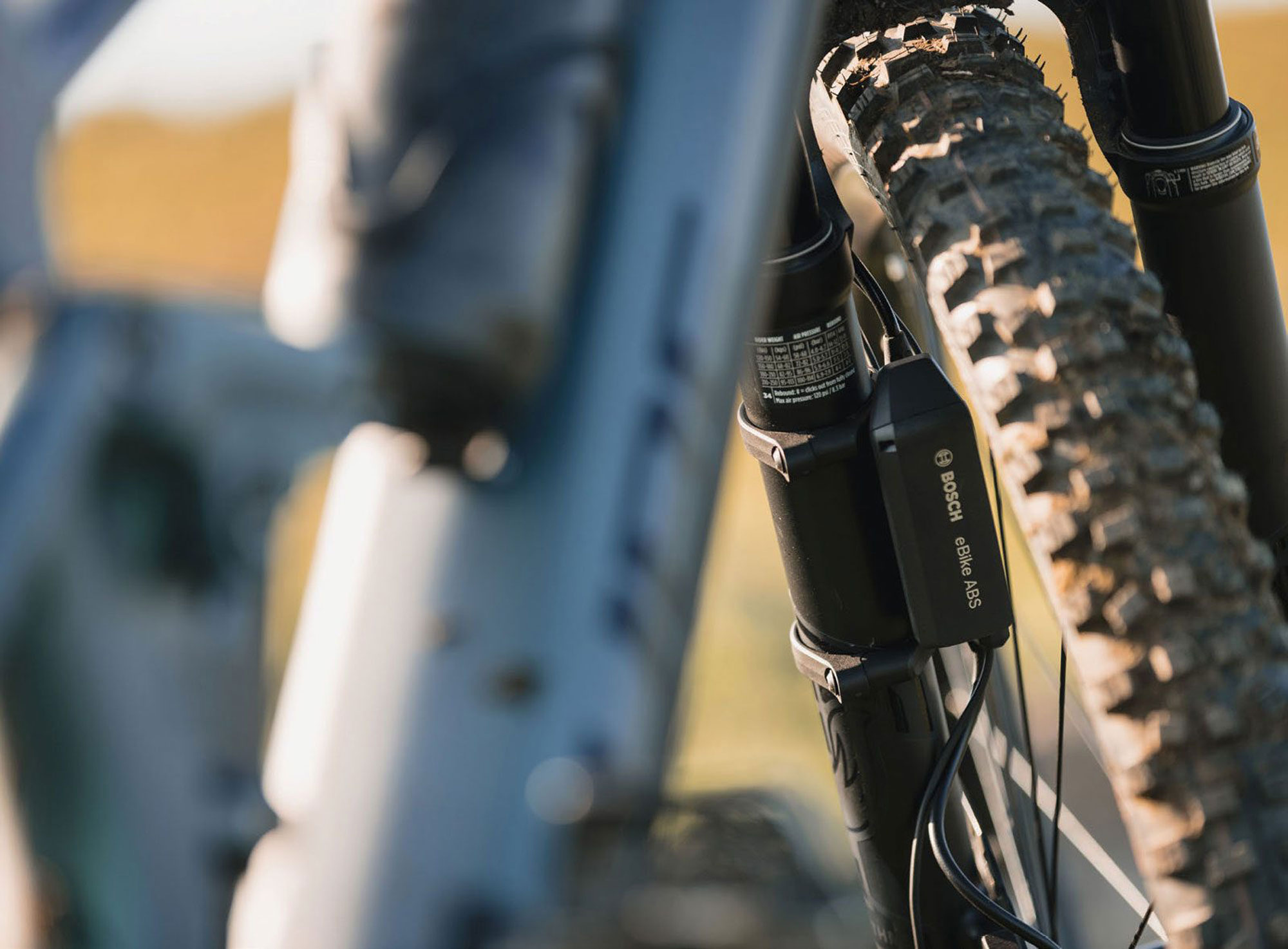
The Cube Stereo Hybrid 140’s I rode had a solid build kit with a mixture of in-house components and the “workhorse” parts. Motor and battery, of course, are taken care of by Bosch eBike Systems with the Performance Line CX motor and a 750Wh battery. Fox suspension with a 34 Rhythm and a Fox DPS Performance rear shock keep the bike planted whilst soaking up all the big hits. The bike’s geometry is nothing radical; it’s certainly a capable trail bike. In terms of numbers, the size XL I was testing, runs: reach 497mm, head angle 66mm, seat angle 75.5mm and wheelbase 1283 mm. Long story short, this bike is super stable at high speeds and can handle all the types of trails you’ll be riding it.
Another interesting thing I found was the cockpit reach levels were a little bit different to accommodate the ABS system. The Magura levers weren’t the normal ones found on their mountain bike brakes. Rather than something like an MT7, they were long straight-type lever blades that didn’t offer much reach adjustment. The Shimano shifter had this super weird matchmaker system which made it sit really far down so that changing gears was tricky since I don’t have the biggest hands. These are pretty minor issues and easily fixed so aside from those the rest of the build kit is spot on and top value for money.
It was my first time riding the Bosch system and I enjoyed the clean display screen, smooth and consistent power output and different modes of power assist. eMTB mode gives you the perfect level of power assistance and the bike doesn’t feel like it’s going to run away from you. It even tells you when to change down gears to ensure you aren’t over-torquing the drivetrain if your cadence is too low. And you’re not going to run out of power on your all-day ride with the massive 750-watt battery. Laps on laps, what more could you want? Range anxiety is non-existent here.
Riding the Cube was confidence inspiring. It blew my mind that the ABS system does everything possible to keep you tyre-side down and to reduce the likelihood of going over the bars, no matter how hard you try slamming on the front brake at 32kmph. The addition of ABS means it’s not just your average eBike but, once you’ve got your head around its nuances, it becomes just like riding any other mountain bike with the one caveat: exceptional braking performance. Doing nose wheel pivot turns is impossible with ABS but if you’re not into riding tight, janky tech trails then this bike is right up your alley.
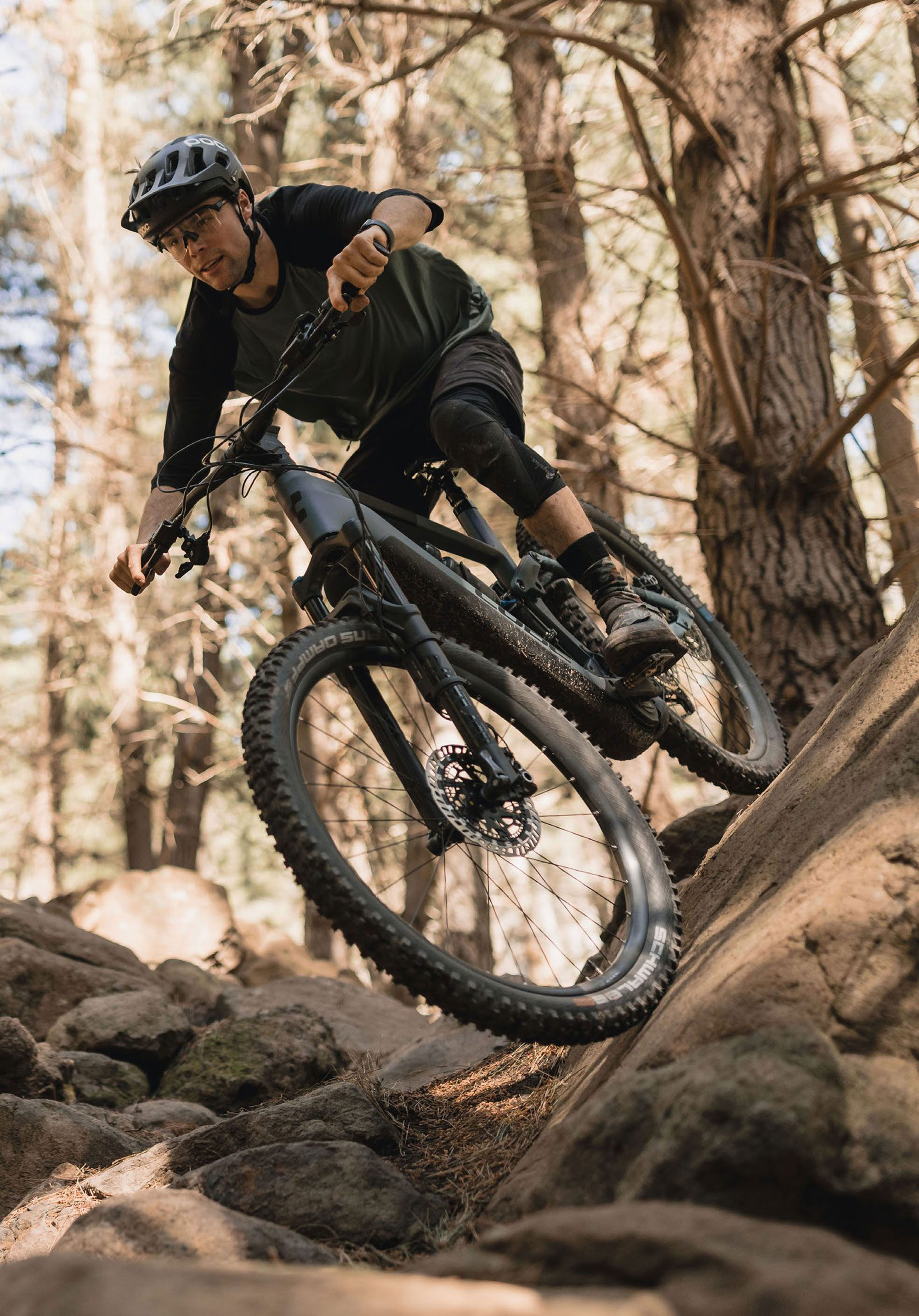
Does ABS belong on mountain bikes? I’d argue yes. If you’re a full-on enduro racer I’d say the benefits are there but only incremental gains. Generally racers have a clear understanding of braking and often years of fingertip control and intuition that has been developed. But, if you’re a casual trail rider who lives for riding their bike as much as they possibly can, and wants to tackle more challenging trails with reassurance, then this technology is for you. It can provide that extra confidence boost that can see you navigate your way through to the bottom of trails you would otherwise not consider, providing a safe pathway to up-skill. It also makes sense for the adventurous riders heading into remote backcountry trails. It is an additional ‘insurance policy’, not to be used to push beyond your limits but about having an added layer of safety to mitigate some of the risks that we all take riding.
Just like the growth of eBikes now representing a huge portion of the bikes we all ride and see on the trails daily; ABS will become a compelling addition to making the ride experience better. I can see that it will help make for more confident and safe riders that will hopefully keep the ACC stats down and backcountry heli-vacs reduced. It will be exciting to see more bikes come to market with this feature in the coming years.
Next time you grab a full handful of front brakes and go over the bars on a steep descent, or lose some confidence with your braking whilst riding and having a near miss, the thought of ABS reassurance may just creep into your mind.
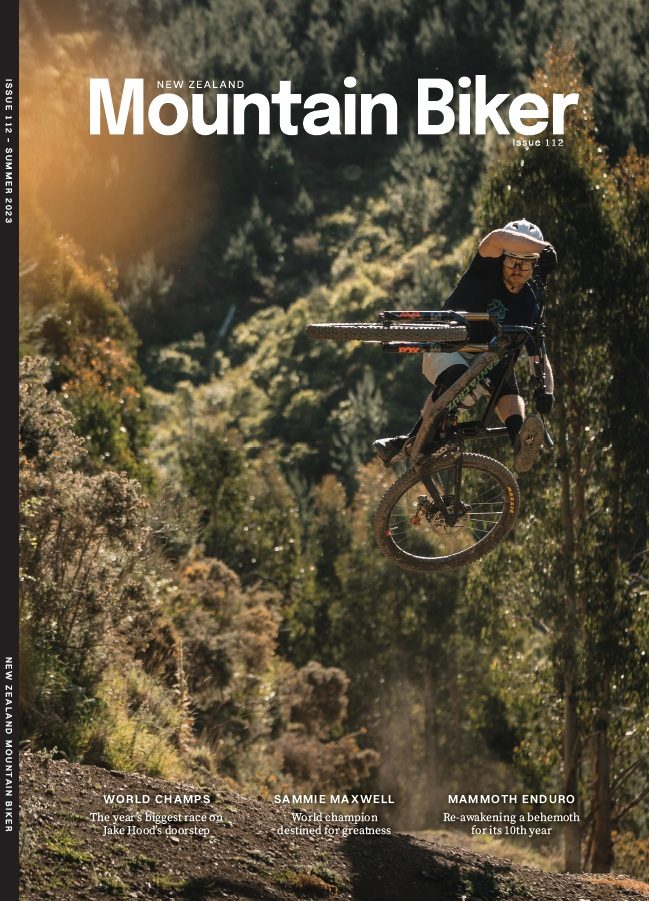
Because I Can
Words & Images Gary Sullivan
Last weekend, for the first time in years, I hung a number on the front of a bike to go racing.
Spotting the difference between me racing and me just aimlessly riding around in the woods is not easy. Averaged out over any decent amount of distance, the pace is about the same. Keen observers on the day would note the conga line of other riders, some yelling “on your right”. I was somewhere in that mess, and therefore, “racing”.
The team at the shop I associate with got excited about the project, and offered me a loaner for the big day: a svelte race machine a bit lighter and leaner looking than my personal deluxe trail sled. I took it for a midweek spin to figure it out and, while it felt very fast, how fast something feels is very subjective. Against my historic efforts along the same trails, it was pretty good. The historic efforts that were faster were a while back, and so the ravages of time need to be taken into account. And I decided, if it feels faster, maybe that is enough. Every little bit would help me achieve my goal, which was to finish.
The event I entered was the Whaka50, which is the sweet spot event in the Whaka100 weekend. I know from bitter experience that the Whaka100 needs to be taken extremely seriously, and the 100 Mile version – with a start in the dark and over 4000 metres of climbing – is beyond my comprehension or scope in this lifetime.
Neither too short nor too long, the 50 can be attacked without much preparation. If you are moderately skilled at mountain biking, it is achievable. If you don’t go too hard, you can finish it in reasonable shape and even enjoy some of the experience.
Probably because of these things, it attracts the biggest field; sold out at 1200 riders. It gets a day of its own, sandwiched between the eliminator battles on the Friday night and the big kahunas on Sunday. This makes the incredibly well-executed logistics of the whole thing more manageable.
As far as management goes, the Whaka100 weekend is the gold standard for events, in my opinion. Tim and Belinda Farmer and their team do an incredible job. Everything has been thought about, a lot. The race village is a work of art. The course marking is very complicated, wringing 160 kilometres out of a spaghetti bowl of trails takes some major mental gymnastics. It is completely nailed down. The 50 is mercifully simple, as a local I was familiar with every trail.
Here is how it went for me in the middle of the pack:
First of all, the day was spectacular. Dry, high cloud; warm without being super-hot.
Coffee/breakfast executed without issues.
Arrive at venue; meet fellow competitors, banter.
Short warm-up.
My spot in the start chute was far enough back from the start line itself that we had that weird delay between the sound of the start signal and actually moving. And, even once we got underway, there was serious traffic. Into singletrack; fairly flat, very tight, and more or less one lane. There were very few places to pass, and little point in doing so. Admirable patience was displayed by nearly everybody. Only a couple of deranged, over-caffeinated units attempted it, and didn’t really progress much. The one-lane queue situation continued for the first quarter of the race, but that was actually a good thing. It meant I couldn’t follow my natural instinct to go like a mad rabbit until the lights go out, usually long before halfway. Like everybody else, I went as fast as the rider in front of me.
When things finally opened up, the field had strung out enough that for the rest of the ride there was plenty of room. I got lucky enough to have a clear run on all the sections I was looking forward to (the downhill bits) and only a few people for company on the bits I was not so keen about (the uphill bits).
Sometimes, in events like this, a duel is generated by chance. That is one of the very good things about mountain bike races. No matter where you are in the proceedings, there will be somebody else to try to beat. For us (a guy in a blue Lycra outfit and me) the thing lasted almost the entire race.
He was much better than me at going uphill, I was a bit more useful at going downhill. Between us, our advantages averaged out. Two photos taken 35 kilometres apart show us together, and yet, for most of the event we were not even in sight of each other. He got past me for the final time near the end, and whatever gas I had left in the tank was not enough to do anything about it.
A few hours in, I questioned what I was doing, and why. The event was in my local patch, and I am lucky enough to be able to ride the same trails any day of the week, free of charge.
These questions were repeated, often, once we got to the pointy bit of the course. The long climb to the top of Lobotomy, for example. On the constant pinch climbs of Old Chevy. And, after the indignity of the pond. The course is completed by the crossing of a little pond, which can be done neatly and almost bone dry if you hit the little ramp just right and clear the thing. A crowd gathers to watch, and riders can hear them yelling and laughing for quite some time before arriving on the scene.
A sharp left turn off a small ridge drops riders down a steep chute to the crossing. I should have had a look at the run-in to the ramp before the event, my habitual exit to that particular trail avoids the pond altogether.
I didn’t, so my attempt to jump the pond fell short by a metre.
The struggle out of the muddy slot created by hundreds of people doing their own versions of my stunt is an ignominious end to an otherwise great day.
Cursing my stupidity in even entering such a ridiculous race only lasted a few seconds. Then I was on the grass, between the banners, and arriving at the finish line in one piece.
The next few minutes is a bit of a blur but, soon enough, I was in a patch of shade, laughing with some mates and feeling really good about the enterprise.
At that point, I could clear my head and figure out why I signed up for the race -and realised that probably the main reason for doing the thing was, simply, because I can. No matter where you are in the proceedings, there will be somebody else to try to beat.

Plastic Memories
Words & Images Lester Perry
Recently, I was fortunate enough to get my own space in our house. It’s an office, gym, bike and gear storage room, and a place to keep many years’ worth of bike-related things. Some may call it a man cave, others may call it a mess – whatever it is, it’s mine and it’s just how I like it.
This new space came with fresh, blank, unadulterated walls; the perfect spot to add some character and colour. Moving boxes from the shed to the new room gave me the opportunity to crack open a bit of a time capsule of sorts, a cardboard box that’s previously sat in the corner of my garage gathering dust and spider webs. Within this box was a treasure trove of memories in the form of event number plates, over 100 of them, dating back as early as 2009. This is by no means a complete set of all the events I’ve attended in my time, but offers a good cross-section of places ridden, and time spent riding with other like-minded bike nutters.
One dreary Sunday afternoon, banished to the four walls of my new space with monsoon-like conditions outdoors, I sat with a fresh packet of Blutac and began arranging the number plates in some sort of fashion on one of the newly finished walls.
The wall now covered with these rectangles of numbered plastic represents the ebb and flow of my riding over the years. From strictly gravity-based pursuits in the earliest events (although I don’t have many plates from these days), through some solid roadie hit outs, to cyclocross, cross country, and even some fixed-gear races, all dispersed with plenty of Enduro race plates (maybe too many of them). My wall is now representative of almost every cycling genre.
For whatever reason, I’m not usually one to dwell on an event. Pay the money, attach the number, wait at the start line; the gun goes, max heart rate for a while, possibly some chill times, hopefully stay upright and, finally, cross the finish line. And on to the next one.
Sorting through plates, the memories return. Each number plate is a portal to a set of memories, filed away in the catalogue of my mind. Seeing each plate again returns memories to the fore, if only for a brief minute. I’m surprised how many of the events I remember; not the bad times, or the suffering, just the good times. The physical suffering at a race is fleeting and quickly forgotten, but the memory of the whole vibe lasts forever. The specifics of each event have faded over time, only pivotal moments remain; maybe a good result, a crash or mechanical, or even the feeling on a particular section of trail. The specific pain of any of the numerous crashes is quickly forgotten, just the scars remain to remind me of those. It’s just the positives and the overall feeling that remain months or even years after an event.
I’ve never thought of myself as much of a competitive person, and I’ve won very few races, but judging by the sheer quantity of number plates now crowding my wall, there’s something that keeps me coming back to competition. Maybe it’s the camaraderie with my fellow racers, that collective feeling that we’ve invested in something that takes some physical and mental fortitude. Maybe it’s the challenge involved, that Type 2 fun; hard at the time, but rewarding once complete. Possibly, it’s a course of habit and these events have become a reason to get out and ride; a definitive date in the calendar rather than a “we’ll wait and see if I can get a ride in this weekend” sort of scenario.
Some plates hold more weight and value in my mind space than others. These ones sit pride of place, in their own space of prime real estate just beside the desk where I type these words. When I look at these plates there are some common threads. They’re either an overseas epic or a multi-day adventure right here at home; all experiences differing from your average single-day affair. Whatever the reason for continuing to line up at events, each of these number plates has come at some sort of cost: time away from family, the cost of gas to get there, and of course the actual entry fee, not to mention the cost of the bike itself and keeping it running. What price do you put on memories and experiences?
While sticking numbers onto the wall, I began to think about the total value of entry fees that I’ve shelled out for since this collection began, so I pulled out the trusty calculator. Even the most conservative estimates would put entry fees alone around the $10,000 mark, let alone all the associated costs. What else could I have done with that money? Maybe a completely different hobby could have consumed the dollars, but no other hobby sits right or makes clear sense to me. It seems bikes weren’t only right for me back in the early days, but still are to this day; a part of my DNA in some strange way.
Judging by my wall planner for the coming summer, there will be a few more memories made, and associated number plates added to the wall. This strange bike racing addiction is set to continue for another season and, once all’s said and done, all that will remain are number plates and memories.



